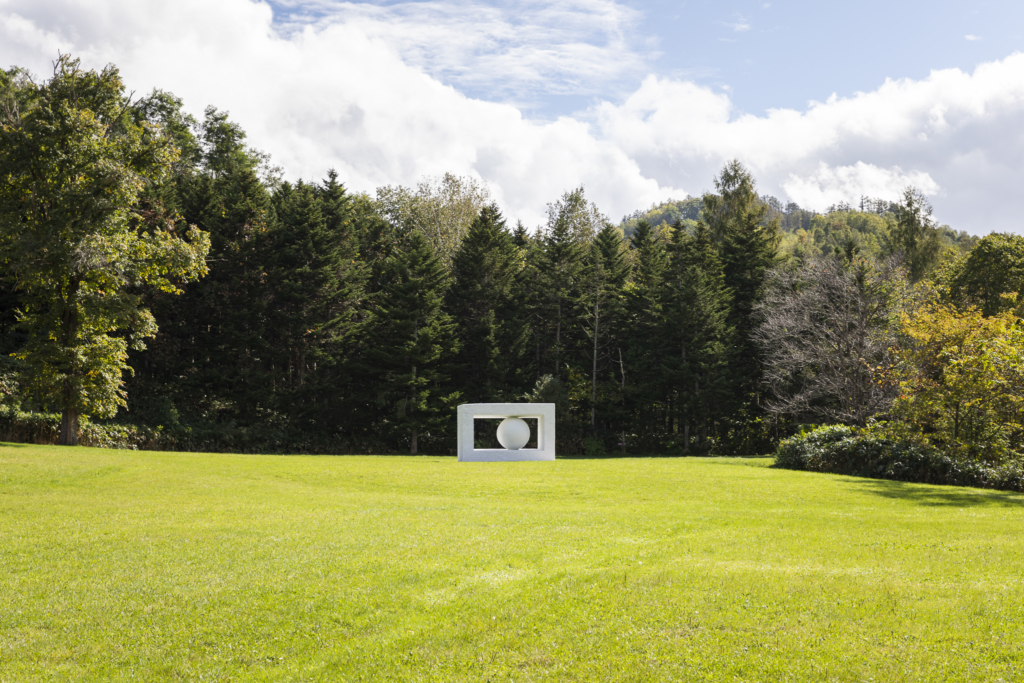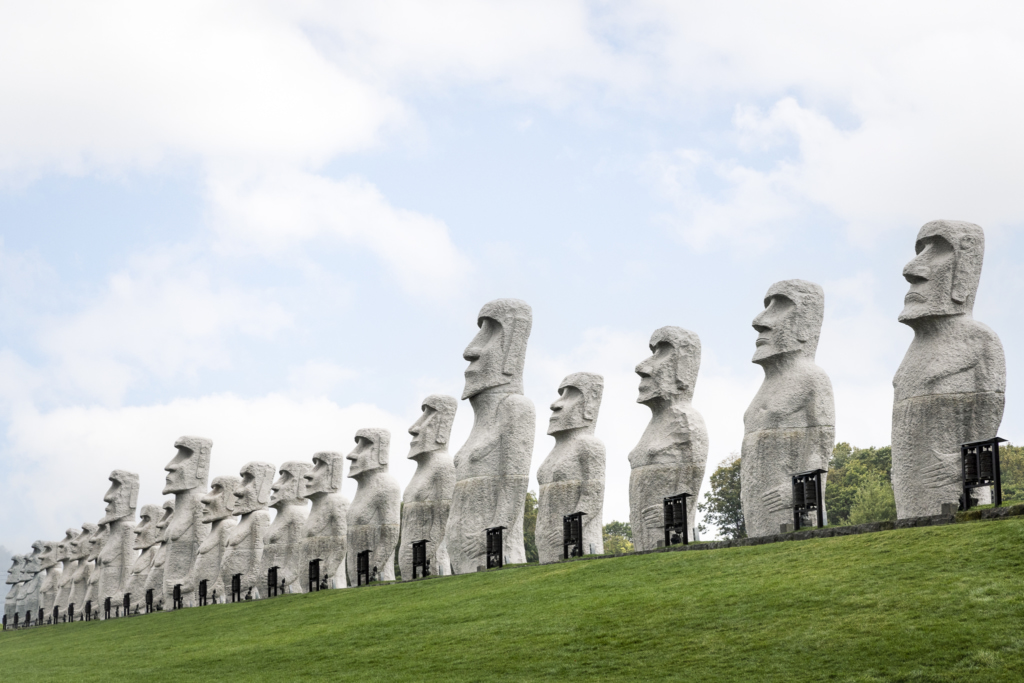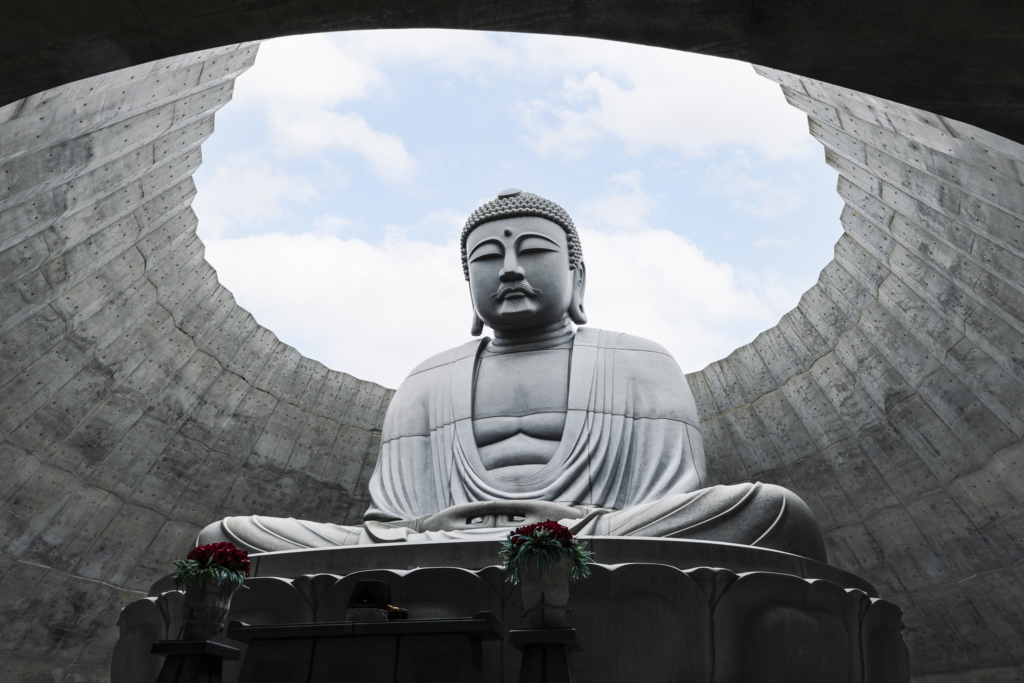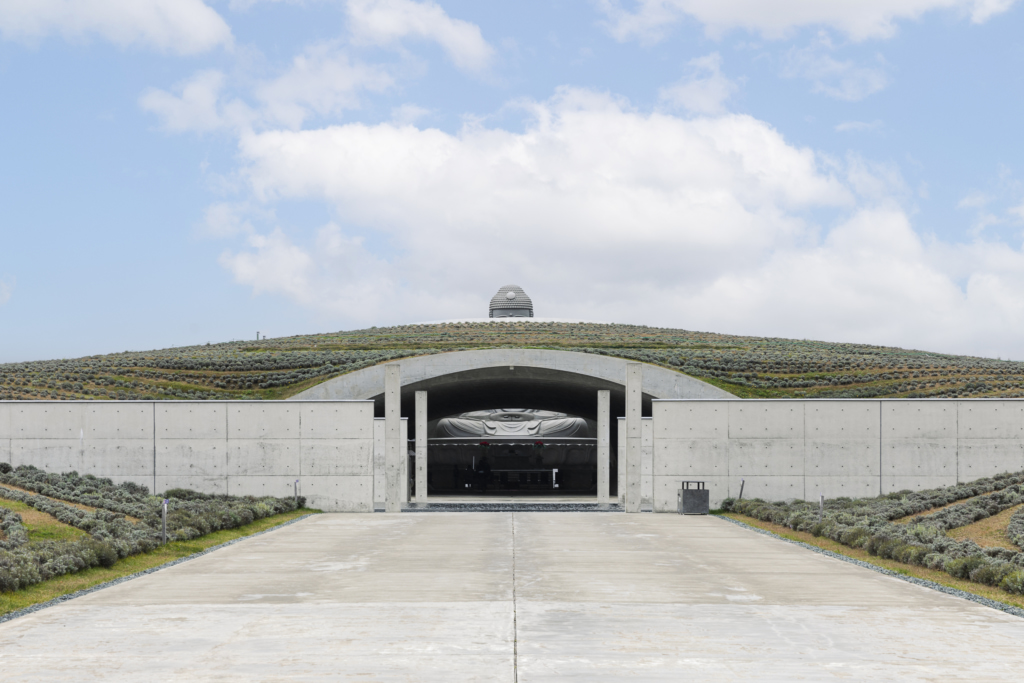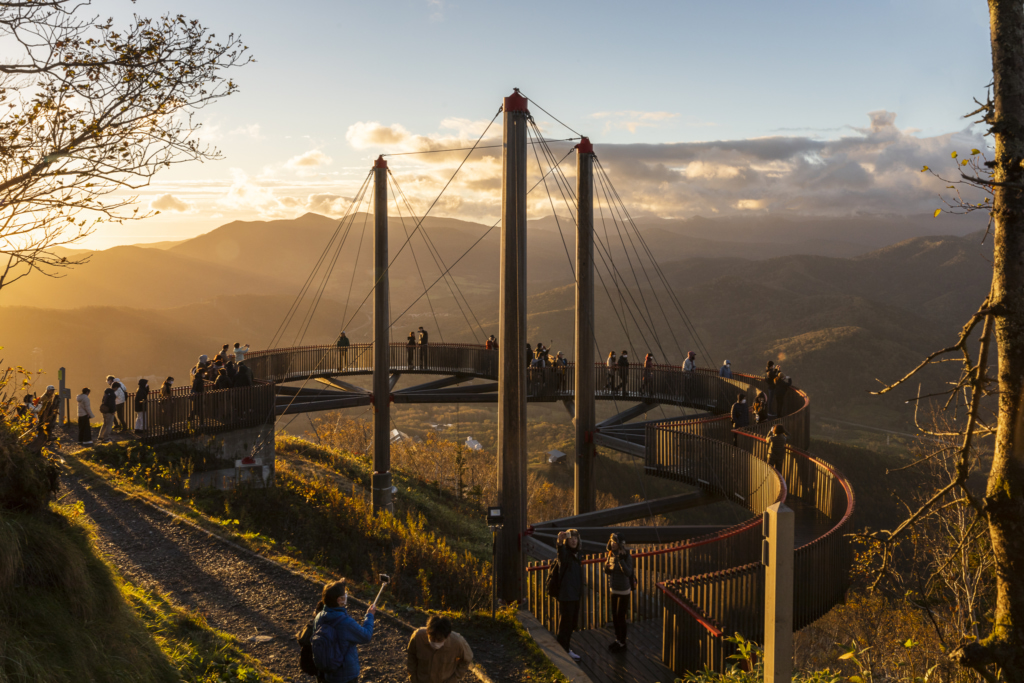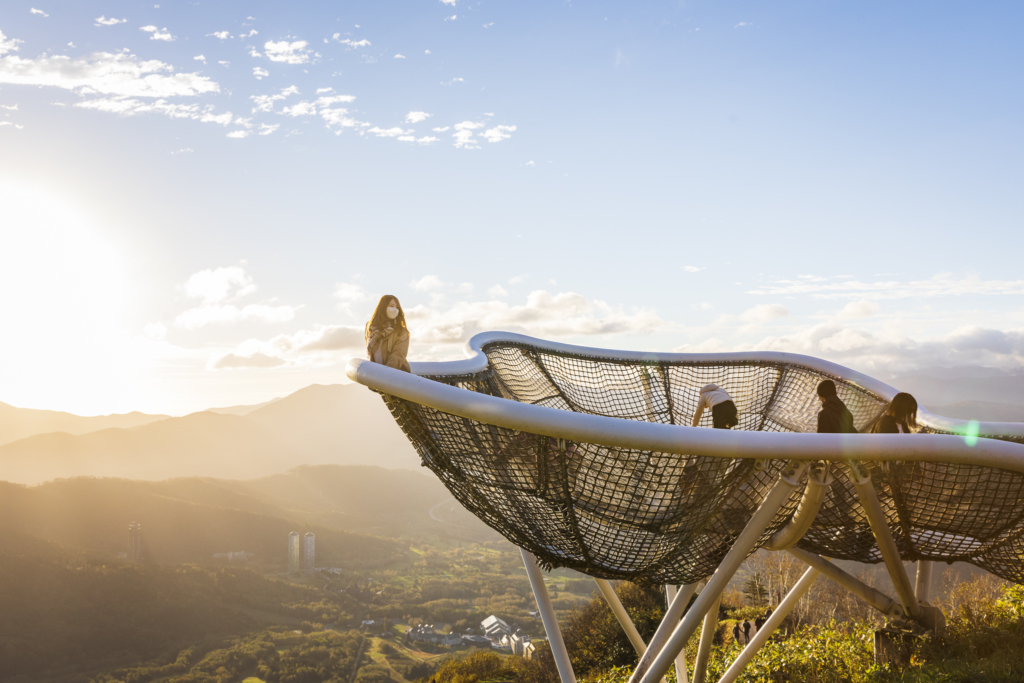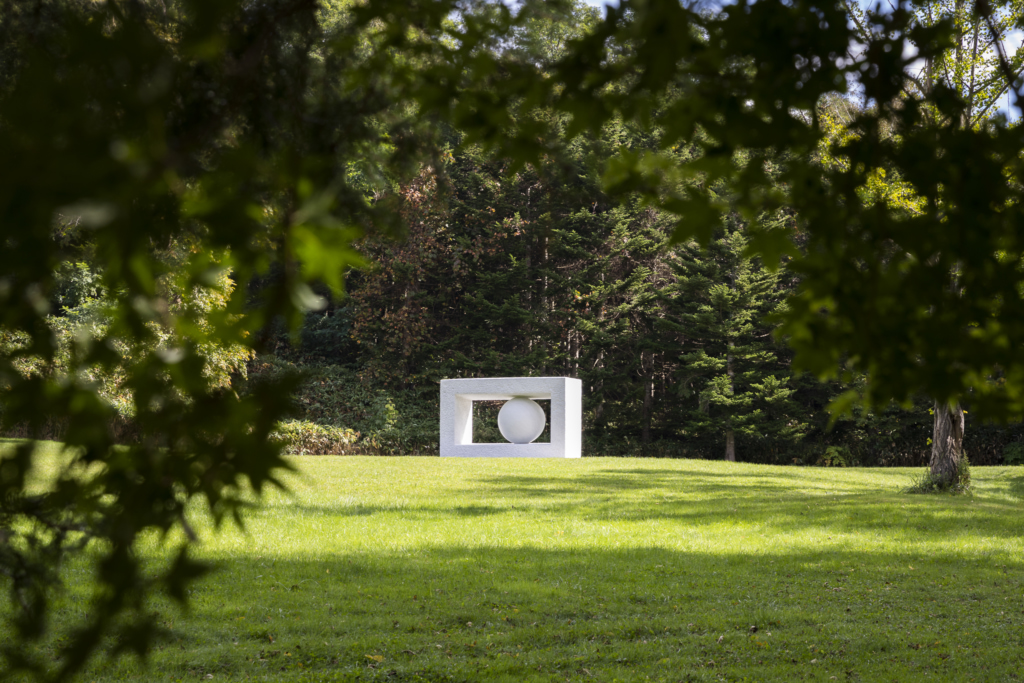In the big and midsize cities of Japan’s more populous prefectures, you’ll find museums and galleries aplenty. In contrast, the sparsely populated prefecture of Hokkaido offers a surprisingly long list of locations that blur the lines between art, architecture and nature — if you don’t mind venturing outside central Sapporo.
Note: A car is recommended to access these destinations, though some do offer shuttle bus services. Be sure to check when planning your trip.
1.
Makomanai Takino Cemetery
Located on the outskirts of Sapporo, Makomanai Takino Cemetery is well worth the trip. The 1,800,473-square-meter tract of land serves, in part, as a final resting place for generations past, but it is also famous for its inspiring sculptures and monuments.
Walking through Makomanai Takino Cemetery, you’ll find a range of works and replicas. Noteworthy examples include a reproduction of Stonehenge and moai statues, but the most recognizable structure is Tadao Ando’s Atama Daibutsu, also known as the Hill of the Buddha, which was completed and opened in 2016.
Commemorating the cemetery’s 30th anniversary, Ando designed and built a concrete dome around a 13.5-meter-tall Buddha statue. At the center of the dome’s ceiling is a spherical opening just big enough for the top of the Buddha’s head to peep out and be visible from the 135-meter-long approach. The hill encircling the Buddha and the surrounding fields burst into bloom in July and August with the blossoms of 150,000 lavender bushes.
2.
Unkai Terrace
Opened in 2003, Unkai Terrace is situated within Hoshino Resorts Tomamu, deep in central Hokkaido and to the south of Daisetsuzan National Park. Its location and 1,088-meter elevation offer a rare vantage point: On a clear day, you can see Mount Hidaka and Mount Tokachi in the distance, and, if weather permits, you can witness unkai, a phenomenon known in English as “sea of clouds.”
Unkai Terrace is more than just an observatory, however, as the facility aims to help visitors become one with nature. It does this through installations — there are currently seven — created with the concept of “Cloud 9,” which itself is a play on the English expression conveying elation.
Each installation provides a different way to enjoy unkai. Most notable are the Cloud Walk, an elevated walkway in the shape of a cartoon cloud that offers a panoramic view of the valley below, and the Cloud Pool, a mesh-like metal net suspended over a small cliff into which visitors can climb to feel as though they are swimming in clouds.
Unkai Terrace’s principal season is from mid-May to mid-October. As the 13-minute ropeway that whisks cloud-chasers to the terrace only runs until 7 or 8am depending on the time of year, spending the night on the premises is certainly something to consider.
Unkai at Unkai Terrace has, on average, a 40% rate of occurrence, and it’s best to check the weather forecast and conditions before going. Even without unkai, though, watching the sun rise from such a high elevation is a start to the day unlike any other. A final tip: Unkai or no unkai, pack some warm clothes, as even in July and August, temperatures can drop below 10 degrees Celsius at the top.
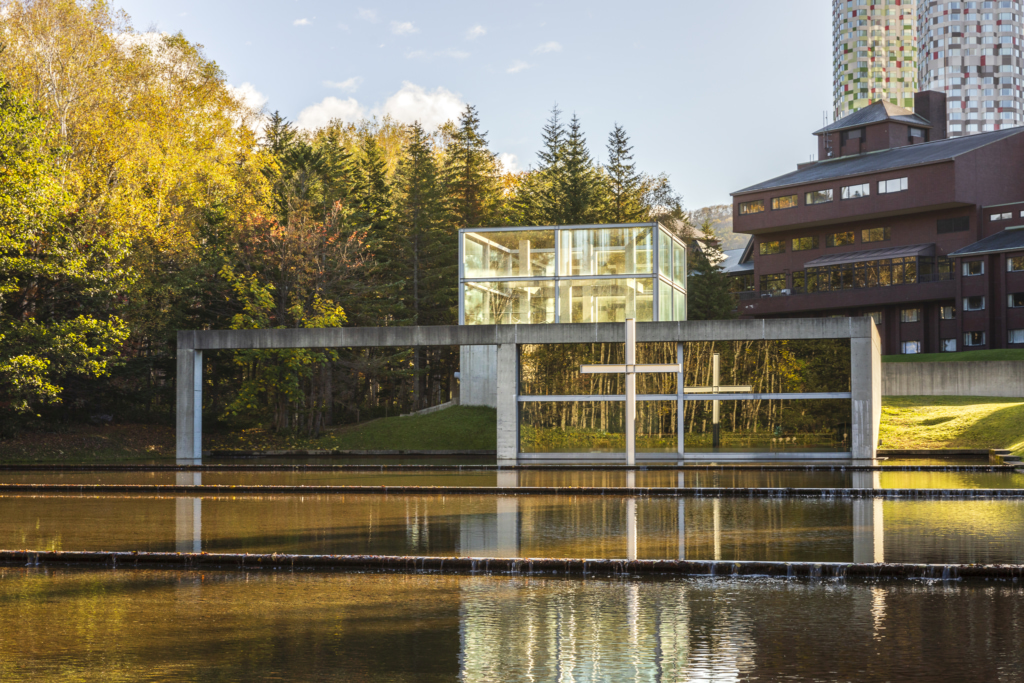
3.
Chapel on the Water
Designed in 1985 by Tadao Ando and completed in 1988, Chapel on the Water is one of the most desirable wedding venues in Japan. Despite being built in the same era as the rest of Hoshino Resorts Tomamu, of which it forms a part, the architecture of Chapel on the Water is strikingly different than that of the rest of the resort’s Showa-era style.
The solemn venue’s defining elements are its shallow pool surrounded by lush forest and its concrete cross. The structure is made up of two cubes: one big cube made of concrete, which holds the ceremony hall as well as stairs and peripheral walls, and one small cube made of glass, which doubles as a skylight and a back room for couples and their parties to prepare.
Similar to his aim when designing the Atama Daibutsu in Sapporo, Ando’s goal was to minimize the separation between the building and nature. This is why the ceremony hall has a floor-to-ceiling window with a view of the pool and mountains in the distance, which makes it feel like the groom, bride and attendees are engulfed in the surrounding flora.
On days when the Chapel on the Water is not booked for a wedding or other event, it is free to enter should visitors or guests of Hoshino Resorts Tomamu want to see this Ando work in person.
4.
Kan Yasuda Sculpture Museum Arte Piazza Bibai
You may have come across Kan Yasuda’s abstract sculptures in Tokyo Midtown, outside JR Sapporo Station or at Benesse Art Site Naoshima. At Arte Piazza Bibai, located in Yasuda’s hometown of Bibai, you’ll find over 40 sculptures by the artist split between gallery rooms inside a renovated elementary school and the museum’s expansive grounds.
Since its opening in 1992, the museum has seen the ups and downs of the coal mining town. On its website, it promises to “keep an aura of calm through the years ahead.” And indeed, a visit to Arte Piazza Bibai is sure to clear your mind of any anxieties, allowing you to just be. There are numerous trails that encourage visitors to discover each piece as they wander. Here, you are allowed to touch every outdoor sculpture and are encouraged to explore each area at your own pace, in whatever order your heart desires.
The museum also has a café selling a selection of quality coffee and snacks. Especially in winter, it offers a warm refuge from the cold. Visitors are welcome to take a break here and enjoy the view of the surrounding green space from the large windows. If you’re feeling crafty, you can also book a sculpting workshop. This experience, called Shape from the Mind, offers everybody and anybody the unique opportunity to follow in the footsteps of Yasuda, who sees art as a form of therapy, by transforming their ideas into a sculpture.
For more travel inspiration and ideas for your next trip to Hokkaido, like and follow the official Hokkaido Love! Facebook page.
Sponsored Post

